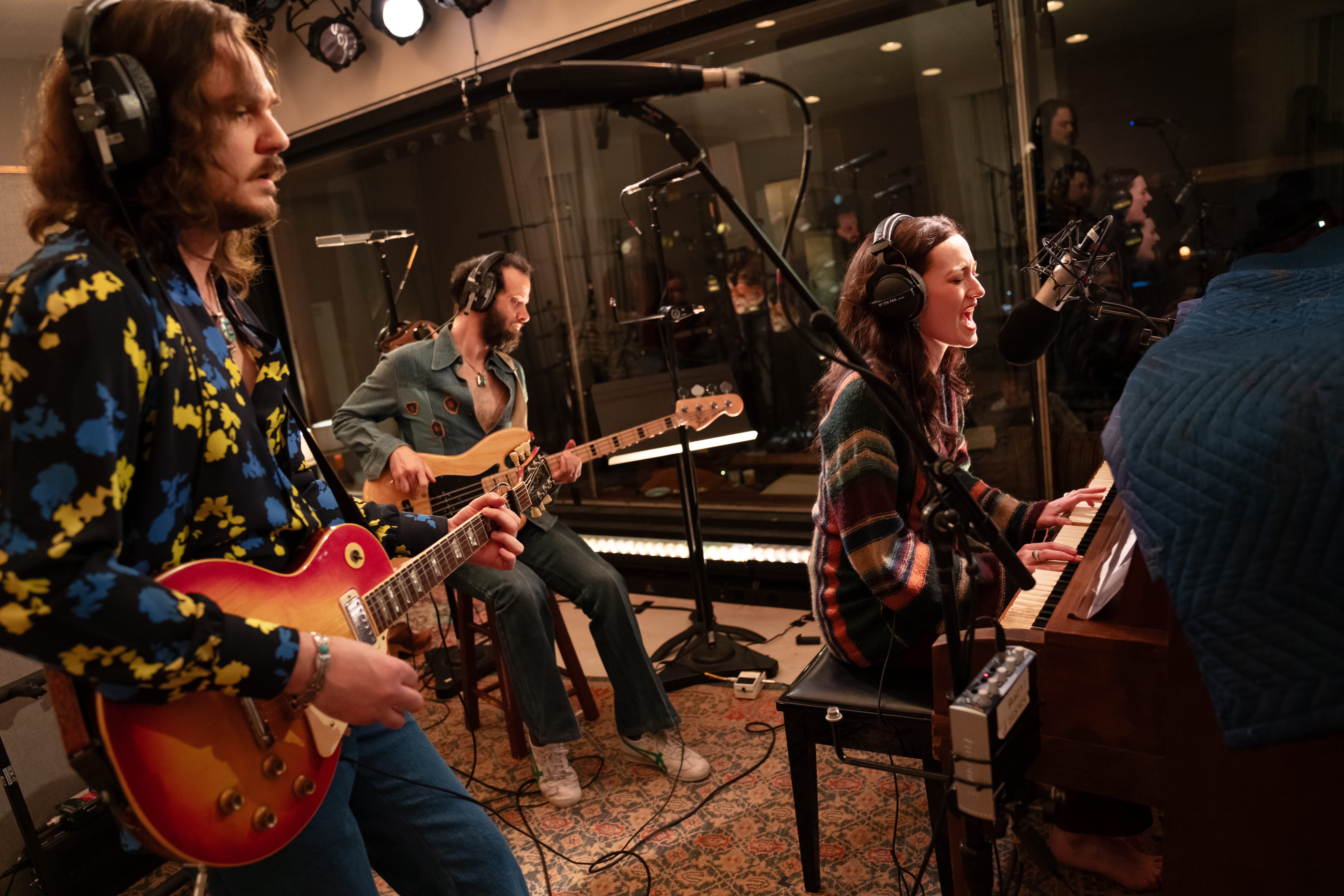Ethan Hawke Draws Blood

(© Tristan Fuge)
Ethan Hawke is the rare leading man who transitions easily and steadily from Hollywood — including an Oscar-nominated performance in Training Day — to theater, earning a Tony Award nomination for The Coast of Utopia and a Drama Desk Award nomination for the Bridge Project’s production of A Winter’s Tale. For the past five years, he’s been heavily involved with The New Group, co-starring in their pitch-perfect revival of David Rabe’s Hurlyburly and directing the company’s award-winning production of Sam Shepard’s A Lie of the Mind. He’s now working again with the New Group as the star of Tommy Nohilly’s excellent new play, Blood From a Stone, at Theatre Row. TheaterMania recently spoke with Hawke about this project.
THEATERMANIA: How did you first get involved with this play?
ETHAN HAWKE: I first heard about the play from Scott Elliott [The New Group’s artistic director], who has kind of been developing it over a couple years. I don’t exactly know the details of how he got a hold of it, but Scott organized a reading that I was a part of. After that reading, I kind of fell in love with the play and have been working on it since then.
TM: In that reading, you played Travis’ younger brother Matt. What led you to switch roles?
EH: You know, that kind of thing happens all the time. You’d have to ask Scott Elliott how he saw the play. I think they’re both great parts.
TM: You’ve played a lot of “bad boys” in the past. What’s it like playing a guy like Travis who’s trying to keep everything together?
EH: It’s difficult. This is a character who is caught in-between everybody. Part of the experience of doing the play is that I’m on stage the whole time, but it’s really never Travis’ scene. He’s always responding to a more powerful energy — his mother, his father, his girlfriend, his sister. He’s always kind of caught between people, and he can’t really find his own voice and find direction. It’s hard to play an amorphous person like that, but I think a lot of us can relate to that type of person, so I enjoy playing him.

in Blood From a Stone
(© Monique Carboni)
TM: How challenging is it to be onstage for almost all three hours of the play?
EH: Yeah, you kind of have to carry the thread of the narrative, especially in a play like this one that’s not plot-driven but actually character-driven and all about how people feel and what they’re thinking but not what’s happening. It’s difficult to keep that ball in the air, that narrative line. It’s a challenge — but it’s one I really enjoy. The play is not dissimilar to a Chekhov play in that way, where it’s really not about what happens but how it happens. Being on the stage all the time for that is what I really love about theater.
TM: You mention Chekhov, but do you think it’s also reminiscent of those great, sprawling 1950s family dramas like Long Day’s Journey Into Night?
EH: Oh, sure. This play is definitely a child of those plays. It’s a 2011 version of what those would be. You can kind of even tell the play is written by an actor. I can see a lot of these scenes being done in class the way Arthur Miller plays are.
TM: Your character, Travis, is loosely based on the playwright, Tommy Nohilly. To what extent did you discuss this connection with him?
EH: It’s sometimes difficult for playwrights to discuss this, since the character they most identify with is often the one they underwrite. They feel like so many things are implicit about the character, or they don’t find themselves as interesting as they find other people they know. It’s been interesting to mine Travis and make him as rich and fully dimensional as the characters he meets along the way.
TM: There have been a lot of changes during the previews; including cutting about an hour of the text and taking away one of the two intermissions. What has the preview period been like for you?
EH: What we’ve really done is put this giant play up onstage, and then we slowly prune the bush to try to make it beautiful. It’s been a fascinating process, and there have been a lot of changes along the way from the rehearsal room to previews to now. It’s part of why I did this. I’ve had a lot of fun doing revivals, from Hurlyburly to A Lie of the Mind to Henry IV; even when I did The Coast of Utopia, it had been done in England first. There’s something just wild and thrilling about doing the first production of a play, because the paint is so wet on it, and the playwright is learning so much about his own play. It’s exciting.
For tickets to Blood From a Stone, click here.










